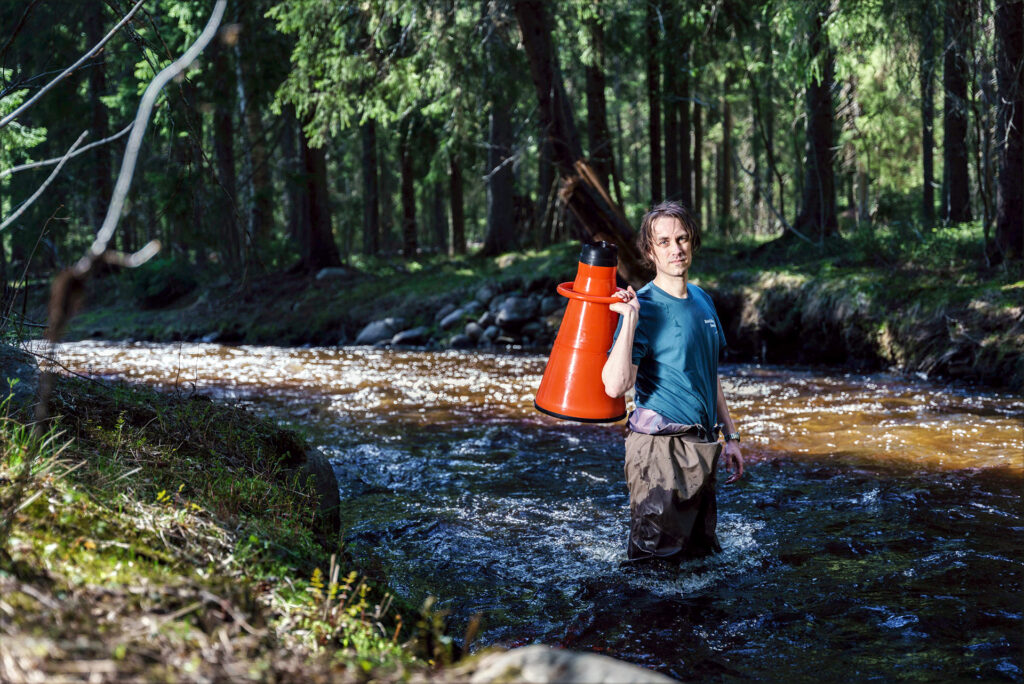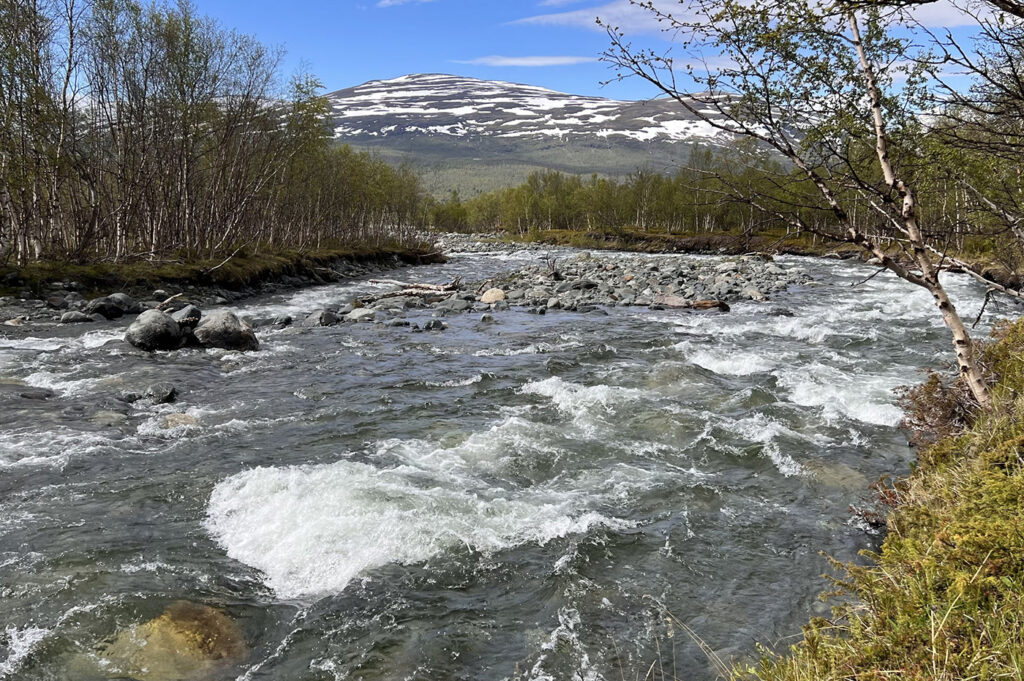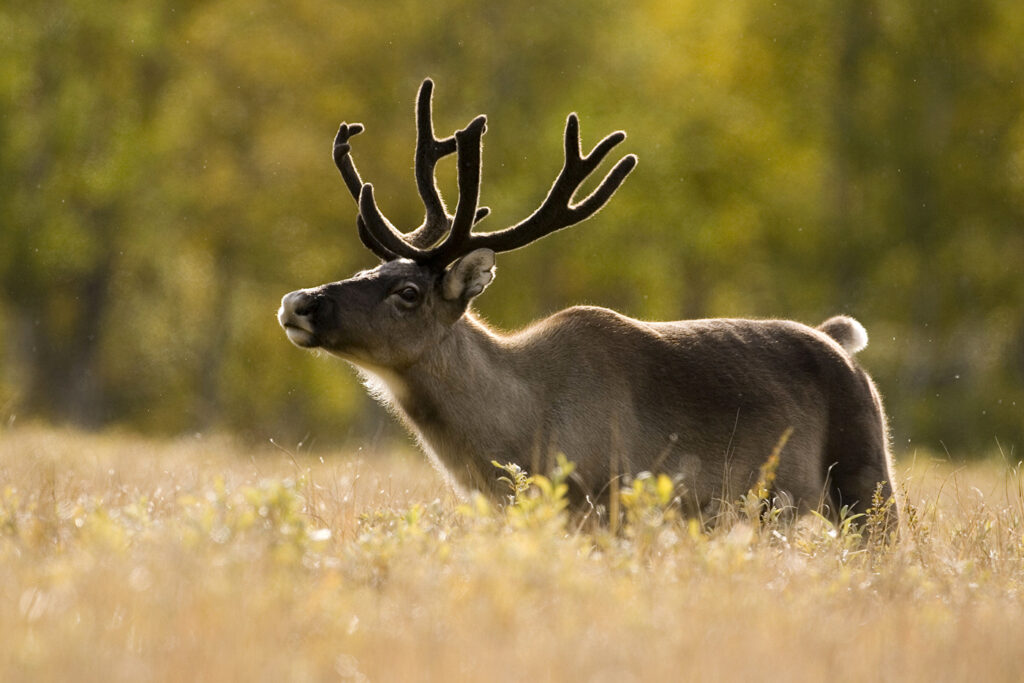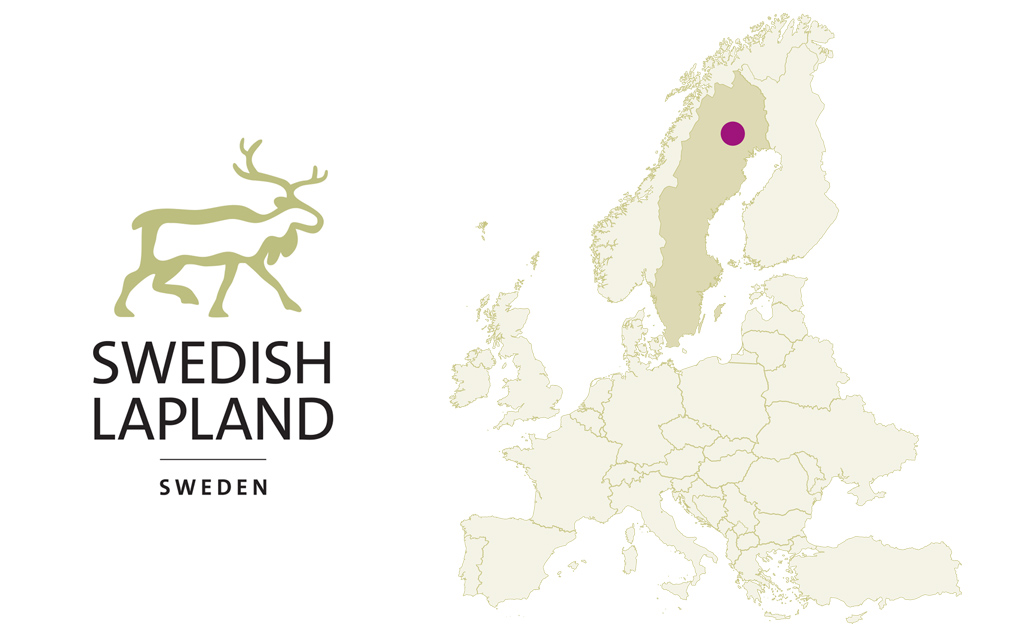Rivers are the lifeblood of Swedish Lapland. We caught up with Henrik Persson, Rewilding Sweden team leader, to discuss how rewilding is restoring these vital waterways – and their catchments – to health.

Extending across the top of Sweden and bisected by the Arctic Circle, Swedish Lapland is defined as much by its myriad rivers and lakes as it is by its huge swathes of forest. While many of these rivers have been harnessed for hydroelectricity, those that remain undammed are home to a range of wild fish species, including salmon, sea trout, lamprey, whitefish, ide, and grayling. Yet even these waterways and their catchment areas have suffered from the long-term impacts of the forestry industry, which means they – and the landscapes of which they are part – could be healthier and far more natural.
Despite the large size of some rewilding sites, Rewilding Sweden’s riverscape approach to river restoration – with its focus on hydrological pathways as opposed to just waterways themselves – ties together processes and functions in a coherent way. Henrik Persson, Rewilding Sweden team leader, explains more.
Why do the rivers in the rewilding landscape need restoring?
Despite the absence of hydropower stations, these main rivers and their many tributaries have been and continue to be heavily impacted by forestry. Historical logging and timber floating activities saw coarse river sediment extensively cleared from riverbeds – which was done to enable timber to float freely – meaning that many hundreds of kilometres of northern Swedish rivers ended up effectively becoming straightened canals, with walls of boulders and blocks lining their sides. This significantly reduced the diversity of in-stream habitats, natural erosion and sedimentation processes, and severed all ecological, biogeochemical, and hydrological connections between land and water.
Additionally, thousands of small wooden dams were constructed in small tributaries to facilitate timber floating, intensive draining made the landscape incapable of storing water after precipitation and monoculture forestry, with the widespread practice of clear-cutting and expansion of forest road networks add up to these.

What measures does your river restoration involve?
We see great potential in focusing our efforts on slow-flowing stretches of river in northern Sweden that run over finer sediment, because this is where nature’s own processes, if kickstarted, can reshape landscapes if we let them. Pure rewilding, in other words.
In addition to restoring these sandy stretches, removing barriers and plugging ditches, a significant part of Rewilding Sweden’s river restoration work is forest-related.
In their natural state, sections of rivers flowing across finer soils in Swedish Lapland should be meandering and braided, with floodplains, swamp forests, and thriving riparian areas. One way of restoring this state is to support and enhance beaver populations, which means we need to work with local communities to increase their acceptance of beavers and their dams.

What measures were taken to restore rivers in 2022 and what are your plans going forward?
In 2022 and early 2023 we laid down many of the plans and much of the strategy for our road ahead. We now have a significant amount of restoration work lined up – not only within rivers, but also in drained wetland and peatland areas adjacent to these river systems, as well as in riverside forests. In addition to a two-year initiative to restore a canalised river in the Råne River catchment, we are also looking to remove 76 small dams across two of our catchment areas and to restore forests to improve reindeer winter migration.
How will river restoration in Swedish Lapland benefit people?
In the past, river restoration here has typically been aimed at improving sport fishing, but such a narrow focus generally ignores the vital connection between rivers and the surrounding landscape, which can play a critical role in the health of riverine fish populations.
Rewilding, which represents a far more holistic approach to river restoration, results in more attractive, well-connected and ecologically functional riverscapes, which provide a far more comprehensive array of benefits to both nature and people. Healthier, more biodiverse rivers, embedded in naturally forested landscapes, can support thriving nature-based economies, through activities such as recreation and tourism, provide cleaner water, and help to reduce downstream flooding. Natural river catchments are also more climate resilient than impacted ones, enabling the species they host to adapt to changing conditions more easily.

Last but not least, an important restoration goal for the rivers we are rewilding is to enable them to start functioning as reindeer migration corridors. The semi-wild reindeers that roam the landscape here are an important keystone species because of their natural grazing. Our approach to river restoration will help Sweden’s indigenous Sámi people continue practicing their traditional way of living.
Want to know more?
This blog is taken from a longer story entitled “Go with the flow”, which featured in the Rewilding Europe Annual Review 2022.
Download a PDF of the story Or check out our Annual Review 2022

